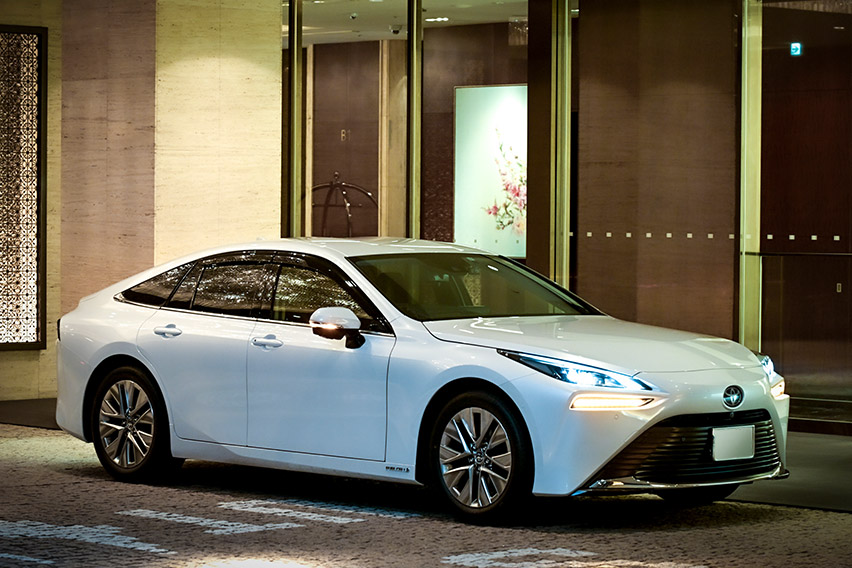TCFD refers to the Task Force on Climate-related Financial Disclosures, which was established by the Financial Stability Board (FSB) at the request of the G20 to examine how to disclose climate-related information and how financial institutions should respond.
In addition, the TCFD recommendations encourage companies and other organizations to understand the "risks" and "opportunities" of climate change that affect their business activities, and disclose information on the categories of "governance," "strategies," "risk management," and "indicators and targets."
The Group is considering the risks and opportunities posed by climate change to its business, based on the TCFD recommendations, taking various measures to address them, and continuously disclosing information about them.
We recognize that the climate change issue is an important management issue for the Group. We believe that developing and operating buildings that do not burden the environment is not only a social mission of the company, but also leads to higher corporate value and increased profits. Meanwhile, there is an increasing risk that the impacts of more extreme weather conditions, natural disasters and stricter environmental regulations on business are becoming more visible.
In order to address climate change, the entire group will work together to establish a group-wide environmental promotion system.
Scenario analysis is a method used to predict the effects of global warming and climate change, as well as changes in the business environment due to long-term policy trends related to climate change, and used to examine how such changes could potentially impact a company's business and management. In an uncertain world, it is used to consider the business impact of situations where the assumptions underlying previous business practices may undergo significant changes.
With the recognition that risks and opportunities associated with climate change can greatly impact our business strategy, we have identified the risks and opportunities related to climate change through the following process, analyzed them using the 1.5°C and 4°C Scenarios, and evaluated their importance.
We analyzed and evaluated the risks and opportunities based on the 1.5°C Scenario which moves toward a decarbonized society, and the 4°C Scenario in which global warming continues to progress. We used SSP1-1.9*1*2 for the 1.5°C Scenario and SSP5-8.5*3 for the 4°C Scenario.
| Scenario | Anticipated social environment | |
|---|---|---|
| 1.5°C Scenario | A Scenario where the world will accelerate towards net zero emissions (regulations will be widely introduced and successful in limiting temperature rise, but with high transition risks) | The entire society will move towards decarbonization, successfully controlling temperature rise through carbon taxes, strengthened regulations related to fossil fuels, and expanding ethical consumption. |
| 4°C Scenario | Scenario where greenhouse gas emission regulations will not be strengthened and global warming will be accelerated (due to limited regulations, global warming will progress, and physical risks will increase) | Limited regulations will result in frequent natural disasters caused by global warming, leading to a high risk of business interruption. |
| Risk classifi-cation |
Risk types | Drivers | Period of Occurrence | Overall impact | |||
|---|---|---|---|---|---|---|---|
| Short-term (~2025) |
Mid-term (~2030) |
Long-term (2031~) |
1.5°C Scenario | 4°C Scenario | |||
| Transition risks | Policy and regulations |
|
● | Large | Small | ||
| Market |
|
● | Medium | Small | |||
|
● | Medium | Small | ||||
|
● | Small | Medium | ||||
| Reputation |
|
● | Large | Small | |||
| Physical risks |
Acute |
|
● | Large | Large | ||
|
● | Medium | Large | ||||
|
● | Small | Large | ||||
| Chronic |
|
● | Medium | Large | |||
|
● | Small | Large | ||||
|
● | Small | Medium | ||||
| Opportunity types |
Drivers | Period of Occurrence | Overall impact | ||||
|---|---|---|---|---|---|---|---|
| Short-term (~2025) |
Mid-term (~2030) |
Long-term (2031~) |
1.5°C Scenario | 4°C Scenario | |||
| Energy and resource efficiency |
|
● | Medium | Small | |||
|
● | Medium | Small | ||||
| Products and services |
|
● | Large | Small | |||
|
● | Large | Small | ||||
| Market |
|
● | Medium | Small | |||
The Samty Group will strengthen its environmental management system to comply with environmental regulations that will be tightened in the future.
Under the environmental management system, we will formulate action plans for decarbonization, establish CO₂ emission reduction targets, and acquire environmental certifications for our buildings.
We will promote sustainability management by actively carrying out facility updates on our owned properties.
We have sorted out climate-related risks and opportunities on a short-, medium-, and long-term time frame.
Climate-related risks will be reflected in the Group's strategies and addressed as one of our Group's key risks.
Our company has set a target to reduce CO₂ emissions (Scope 1 and 2) by 20.0% by the fiscal year ending November 30, 2030, compared to the levels in the fiscal year ending November 30, 2022, in our pursuit of achieving carbon neutrality by 2050.
We will proceed to expand the boundary of our data aggregation and calculation for Scope 3 emissions
| FY2021/11 | FY2022/11 | |
|---|---|---|
| Scope 1 | 1,200 | 1,427 |
| Scope 2 | 2,397 | 2,797 |
| Scope 1+2 | 3,597 | 4,224 |

In order to realize a decarbonized society, the Group has introduced Toyota Motor Corporation’s “MIRAI” fuel cell vehicle.
The vehicle runs on the power of electricity generated by hydrogen and emits no exhaust gas, a cause of global warming, and thus contributes to the decarbonization of company cars with long driving distances.
